Fabric and Process

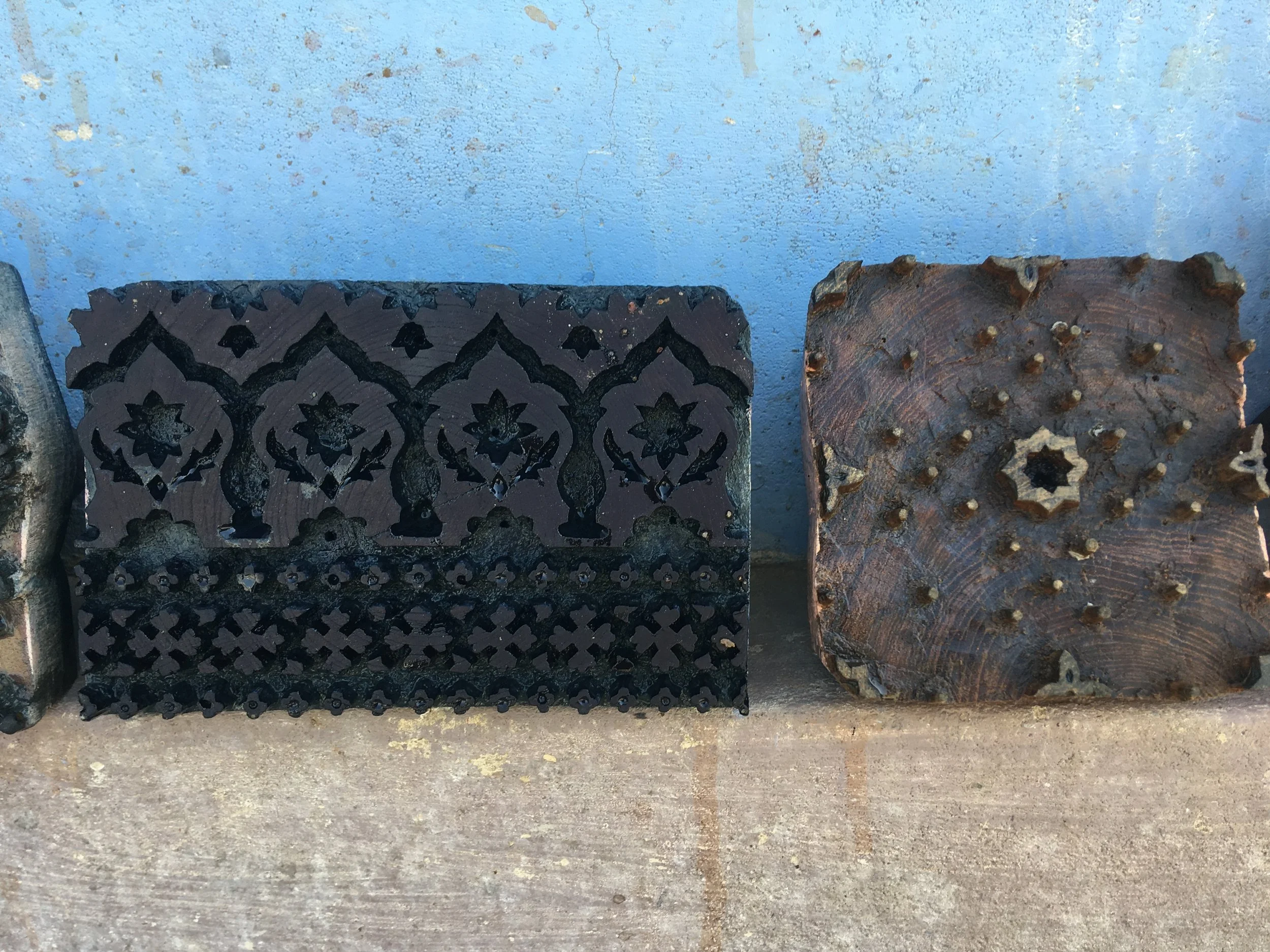



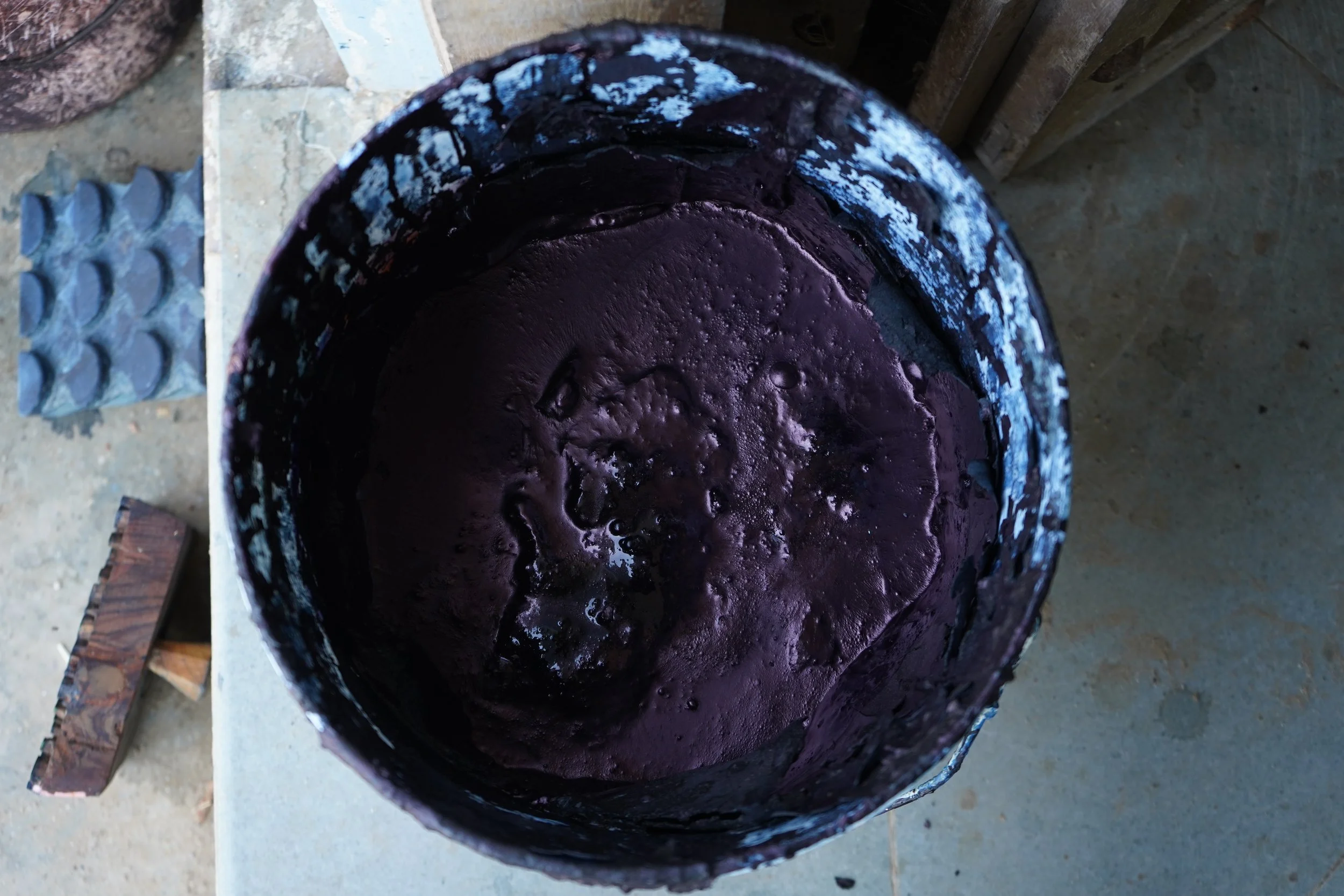
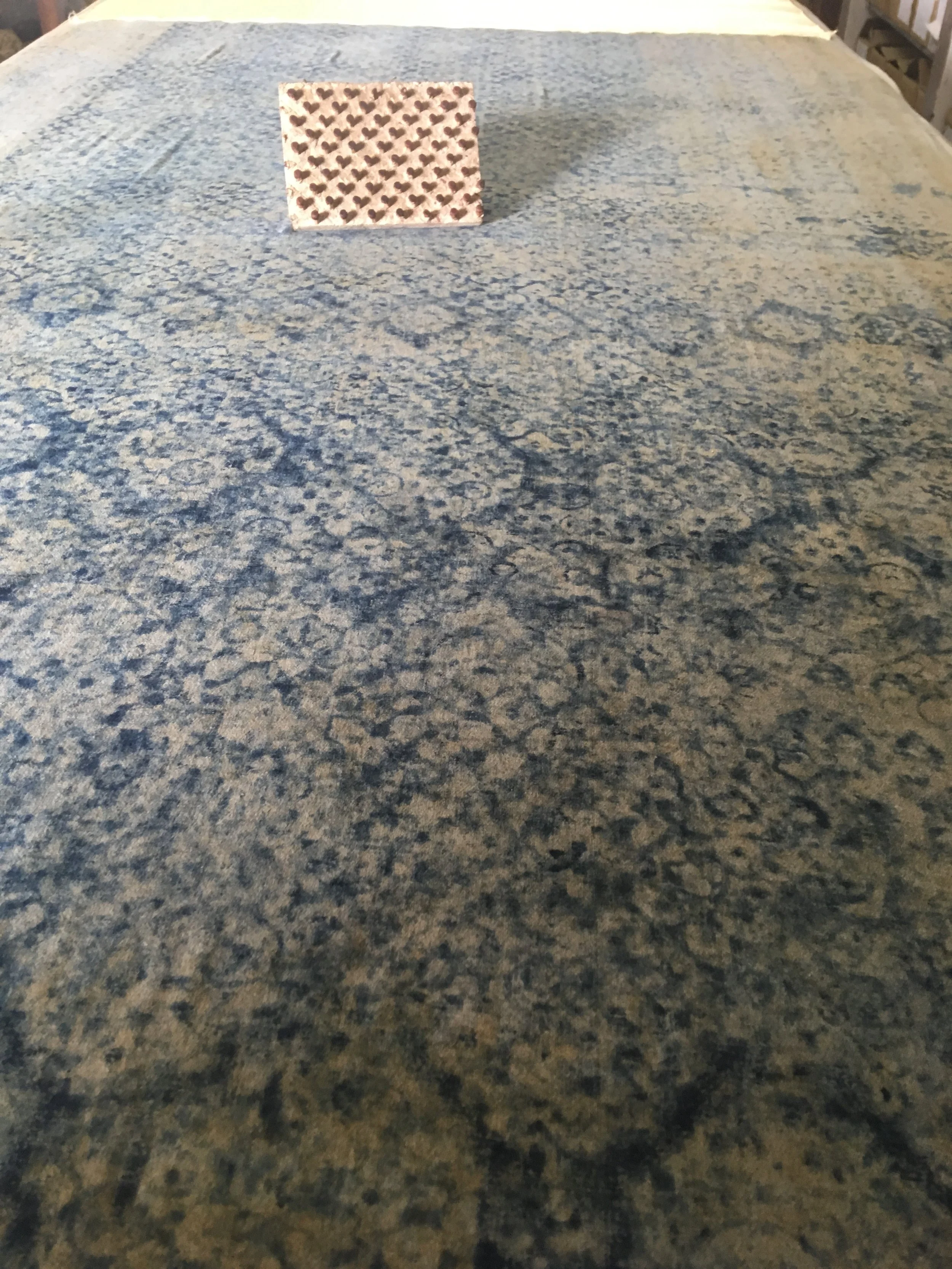



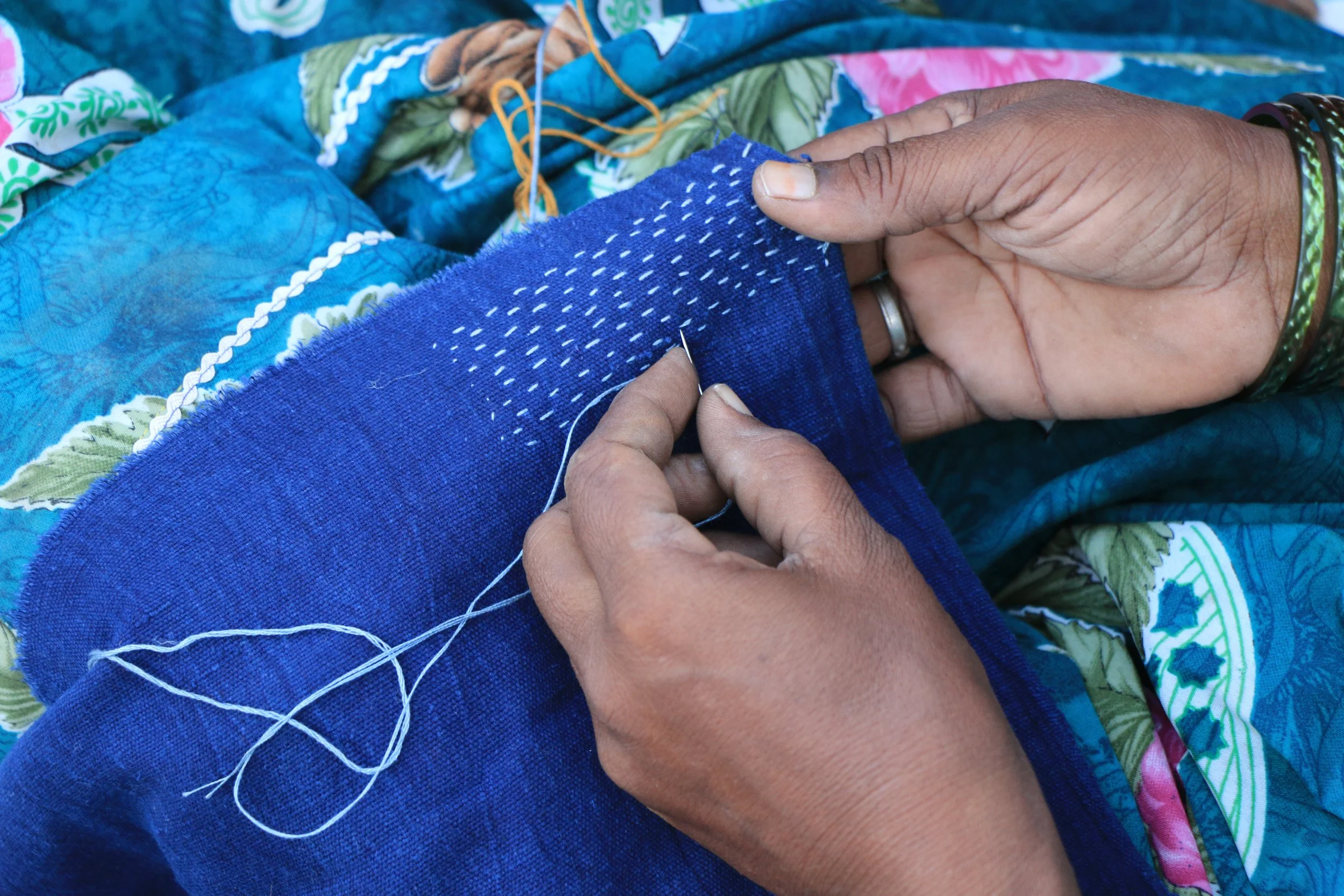
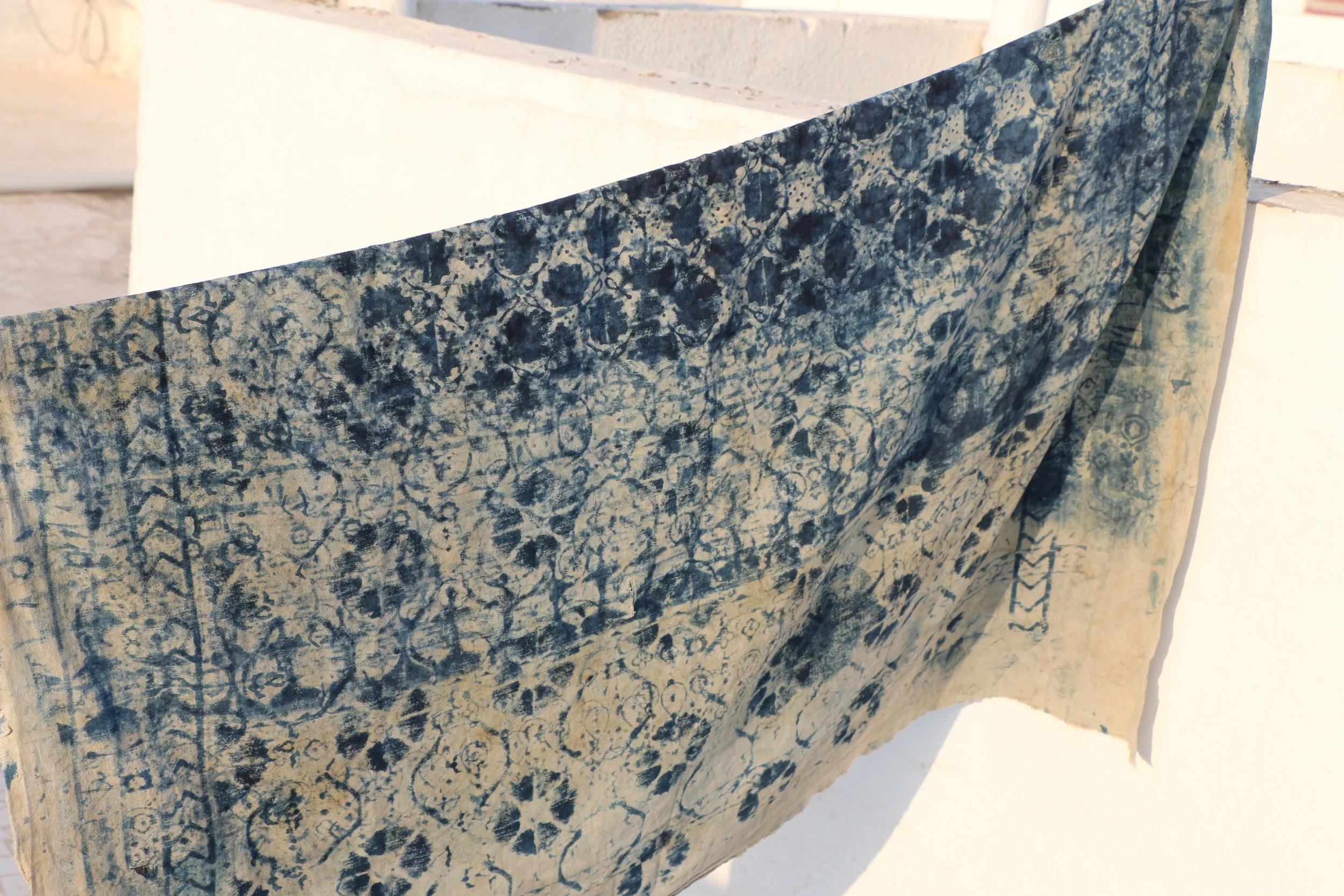

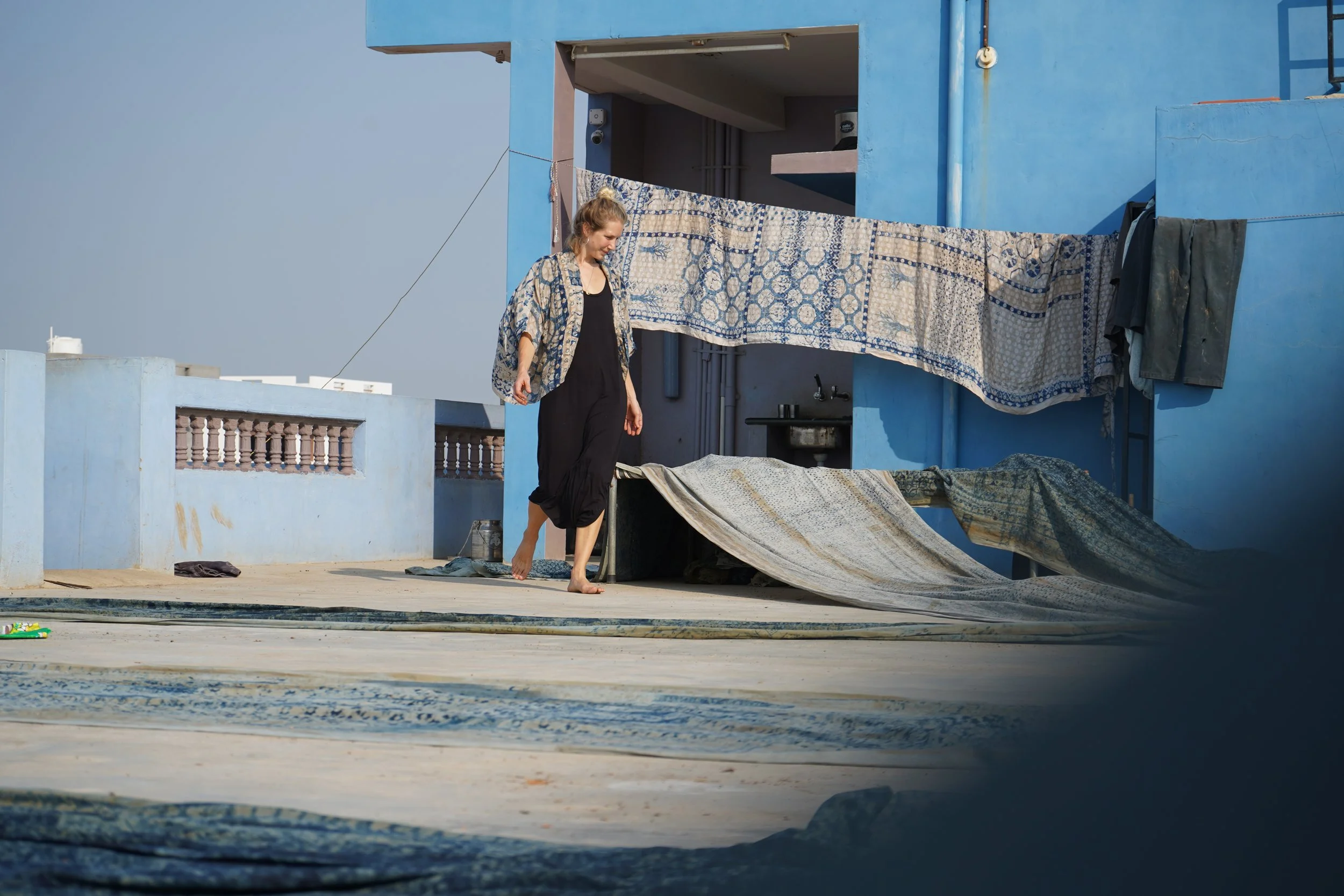





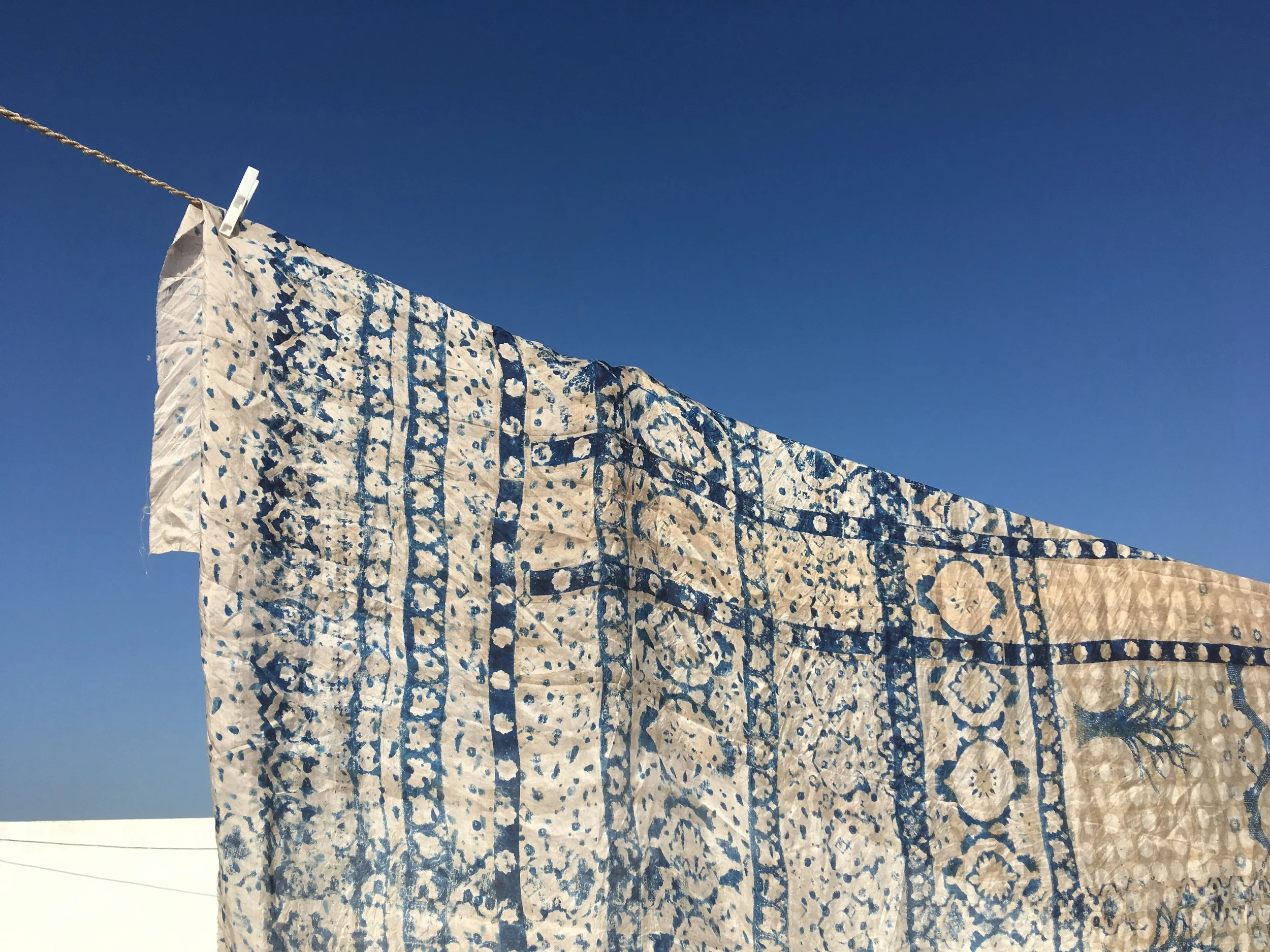
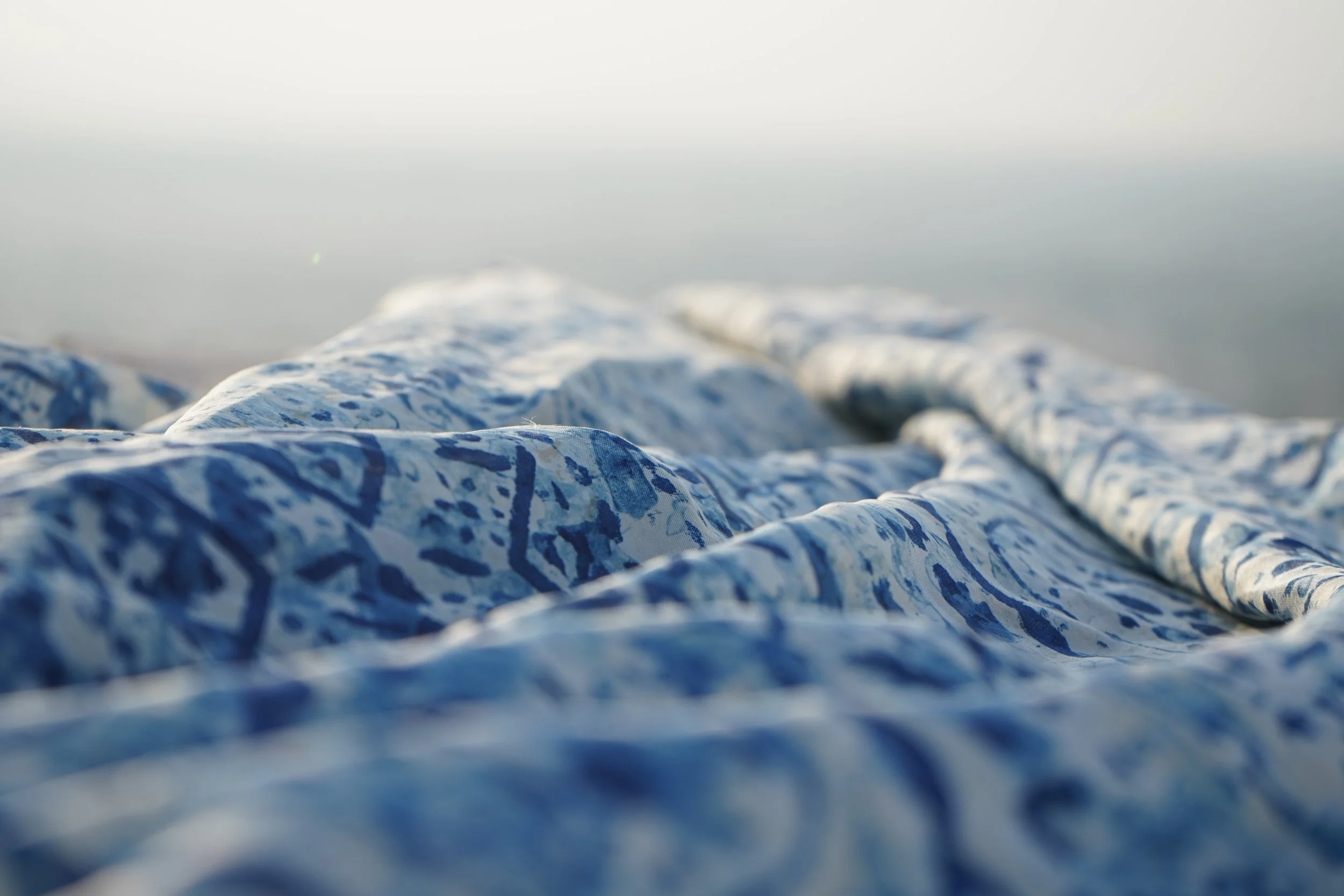

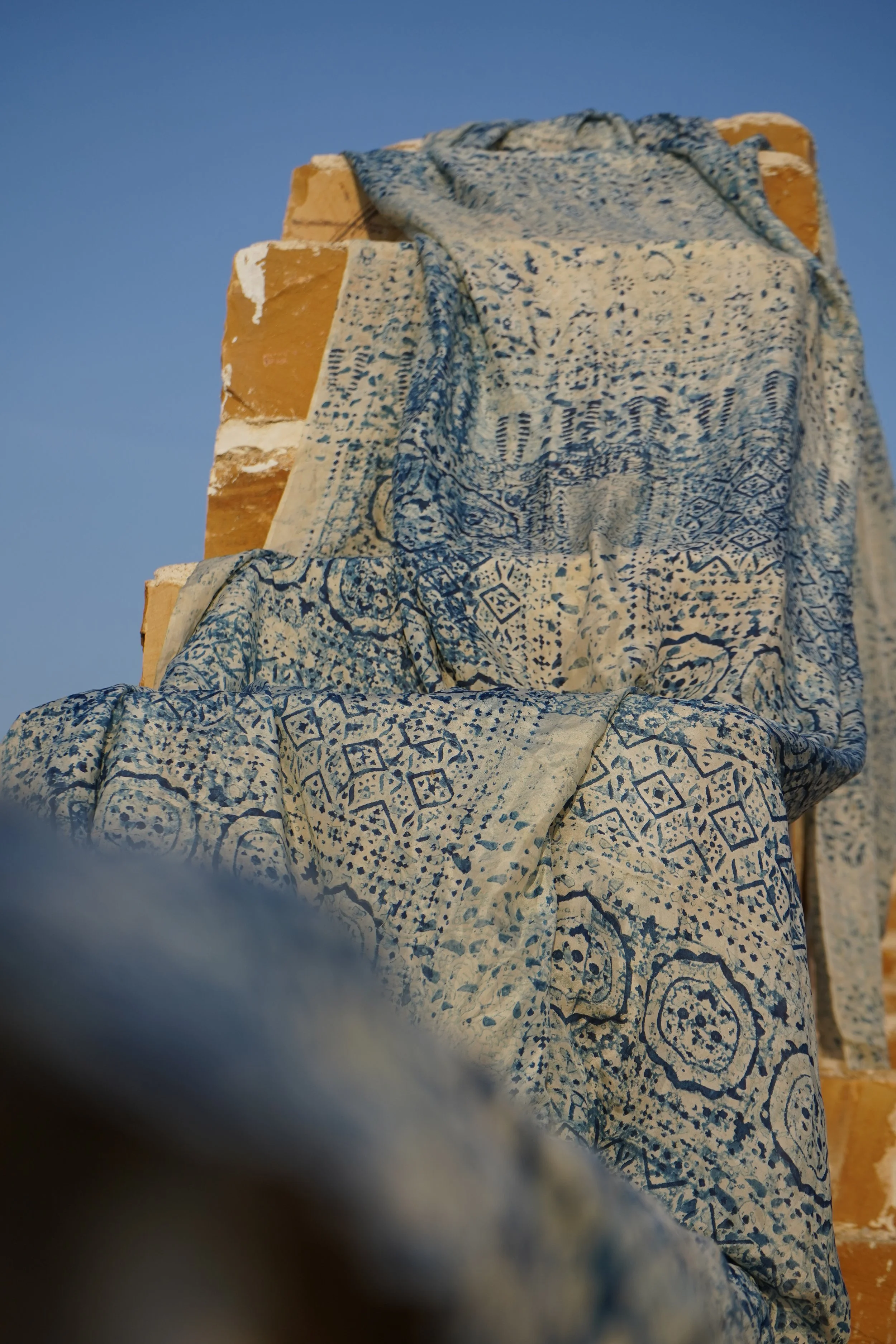
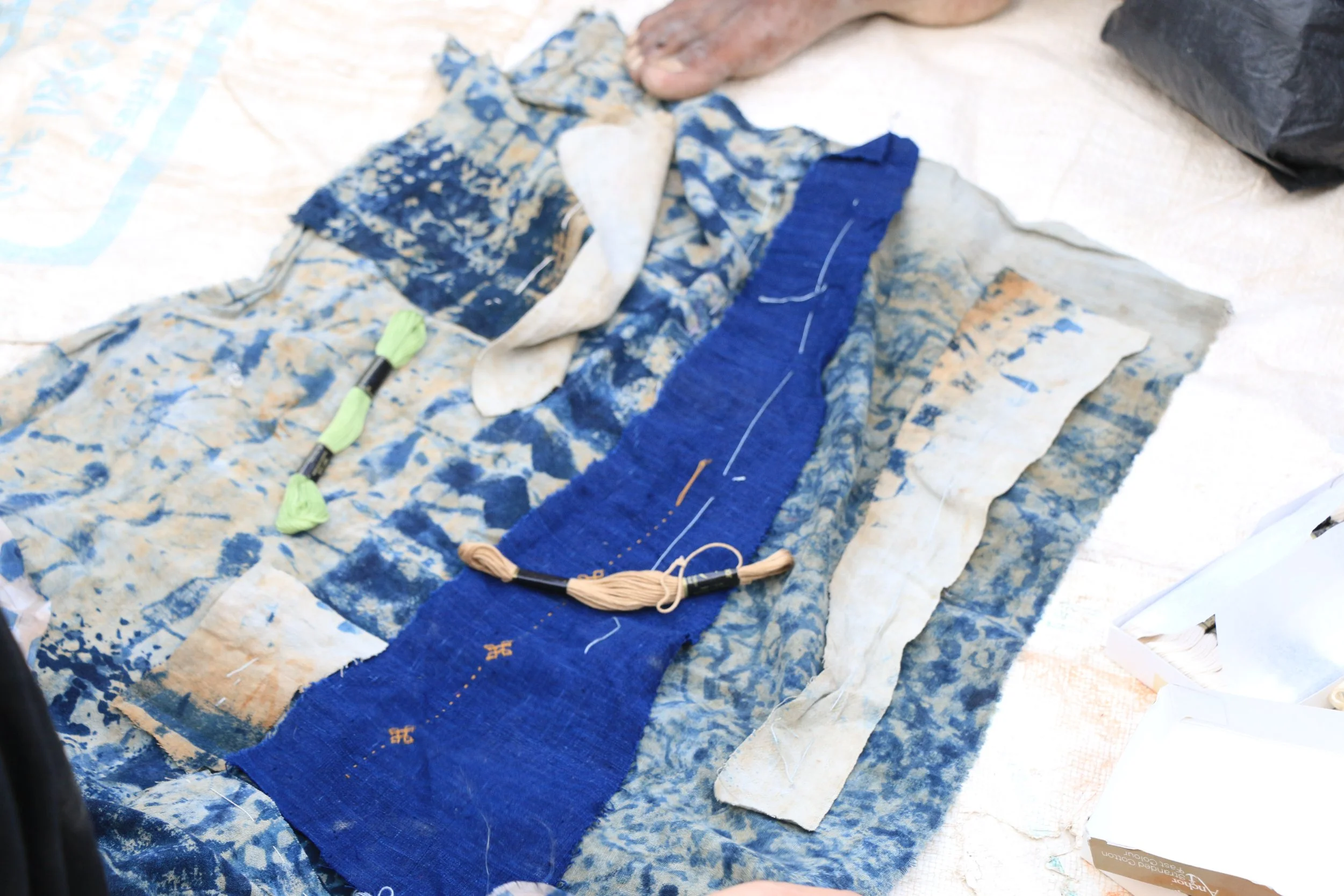

Cotton Achadiya
Achadiya is the cotton undercloth that protects the block-print tables in the desert regions of Gujarat. Over time, they absorb layers of marks, patterns and colours, capturing irregular shapes and distorted motifs, and trace the shadow of the artisans’ movements. These cotton cloths are recycled, washed, dried in the sun, and weathered by the natural elements until discarded.
In these rich canvasses of indigo and iron, subtle Ajrakh designs surface - a glimpse of a tree of life, or a subtle silhouette of a star - but with an asymmetry distinct from true Ajrakh designs.
Silk Achadiya
Exploring this concept further with Sufiyan, we experimented with alternative fabrics, exposing them for various time frames, and capturing them at different stages of their transformation process. The silk Achadiya, like its cotton counterpart, evolves with every step in the artisans’ process, making each piece beautifully unique.
With the silk being lighter and more delicate, different imagery emerges: dappled light on water; branches dancing in the wind; cascading blossom; an ancient mosaic. The depth of these fabrics has a poetic rhythm and each is a piece of art in itself.
.
Kala Cotton
Combined with the Achadiya cloth, we work with the region’s traditionally-grown organic Kala Cotton.
Kala cotton is indigenous to Kutch and completely organic, as the farmers do not use any pesticides and synthetic fertilisers. It is a purely rain-fed crop that has a high tolerance for both disease and pests, and requires minimal investment.
Studio Astray combines the naturally off-white and indigo-dyed Kala Cotton with re-purposed Achadiya cloth to create our collections.
The Village Quilts
With circularity in mind, I saved the offcuts from my first garment prototypes, intending to create a patchwork fabric that reflected the journey of this collaboration. While spending time in a rural village I admired the community’s unique embroidery techniques and we all felt drawn to co-create something meaningful. Sitting together over tea, we arranged the fabric scraps in a composition that inspired us, and stitched them together using their traditional running stitch - a symbolic representation of their village roads and huts.
This quilt remains one of my most cherished pieces—a reflection of shared creativity, and the connections beyond language formed through handcraft. It also symbolises the beauty of transforming waste into something meaningful and honouring traditional handwork as an art form.
Suf Embroidery
During my exploration of Kutch’s renowned embroidery styles, I was particularly drawn to Suf embroidery. I spent a week at Kala Raksha Kala, a grassroots social enterprise dedicated to preserving traditional arts. Here I not only learned the intricacies if this technique from expert women artisans, but also how they worked it into and around their daily lives.
Suf embroidery is a meticulous technique based on the triangle, or "suf", counted on the warp and weft in a surface satin stitch worked from the back. Motifs are never drawn; instead, each artisan envisions her design and counts it out—in reverse. Mastery of Suf embroidery requires precision, an understanding of geometry, and keen eyesight. True artisans showcase their skill through intricate details, filling symmetrical patterns with tiny triangles and delicate accent stitches



